
My German friend @v-siniarski is an outstanding writer and photographer.
He enjoys taking pictures of landscapes and living things in nature outside the city.
He lives in Germany and I live in East Asia on the other side of the globe. He and I communicate frequently across language, cultural and geographic barriers.
I found @v-siniarski's short English sentences easier to understand than English-speaking people's vast and proficient English.
His photos contain his poetic sentiments, so even East Asians like me can easily relate to him.
I was originally interested in French culture, art and literature, but seeing his works, I became interested in German literature as well.
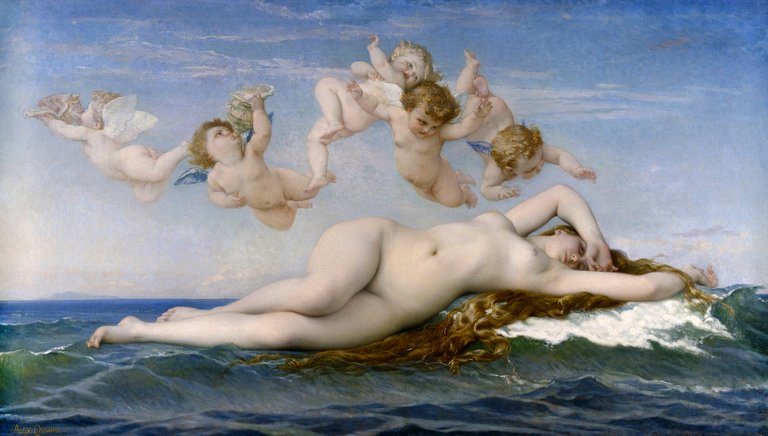 The Birth of Venus
The Birth of Venus
The Birth of Venus of Venus (French: Naissance de Venus) is a painting by the French artist Alexandre Cabanel. It was painted in 1863, and is now in the Musée d'Orsay in Paris. A second and smaller version (85 x 135.9 cm) from ca. 1864 is in Dahesh Museum of Art.[1] A third (106 x 182.6 cm)[2] version dates from 1875; it is in the Metropolitan Museum of Art in New York City.
Shown to great success at the Paris Salon of 1863, The Birth of Venus was immediately purchased by Napoleon III for his own personal collection.[3] That same year Cabanel was made a professor of the Ecole des Beaux-Arts.
Cabanel's erotic imagery, cloaked in historicism, appealed to the propriety of the higher levels of society.[3] Art historian and curator Robert Rosenblum wrote of Cabanel's The Birth of Venus that "This Venus hovers somewhere between an ancient deity and a modern dream"; he described "the ambiguity of her eyes, that seem to be closed but that a close look reveals that she is awake ... A nude who could be asleep or awake is specially formidable for a male viewer".[4]
Cabanel's The Birth of Venus of Venus (French: Naissance de Venus) was one of the greatest masterpieces that made East Asian men enchanted by the dazzling sensuality of French women.😲😍
East Asian men saw the work and were seduced by the dazzling charm of French culture!
Looking at that work, I was so convinced that the woman with the most sensual charm in Europe was a French woman!😄
From an early age, I was fascinated by French fairy tales of beauty, fairies, beasts, princes and wizards.
On the other hand, in German fairy tales, I felt fear and amazement with wolves, witches, goblins, and trolls.
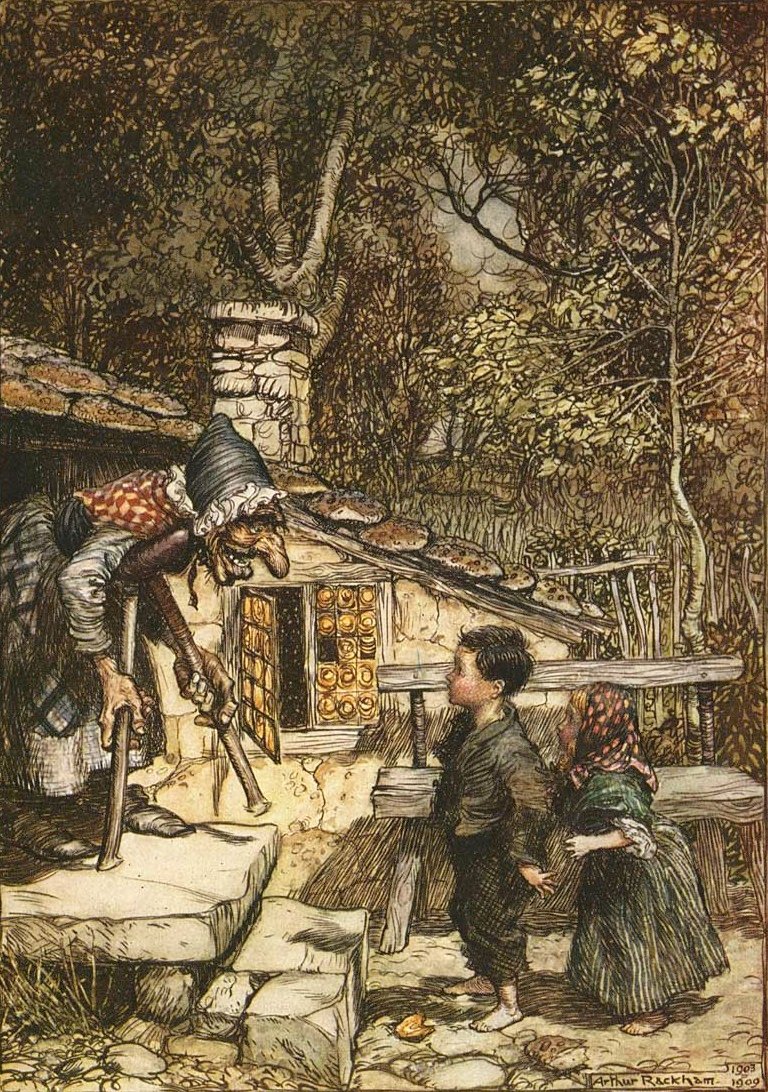 The witch welcomes Hansel and Gretel into her hut. Illustration by Arthur Rackham, 1909.
The witch welcomes Hansel and Gretel into her hut. Illustration by Arthur Rackham, 1909.
"Hansel and Gretel" (/ˈhænsəl, ˈhɛn- ... ˈɡrɛtəl/; German: Hänsel und Gretel [ˈhɛnzl̩ ʔʊnt ˈɡʁeːtl̩])[a] is a German fairy tale collected by the German Brothers Grimm and published in 1812 in Grimm's Fairy Tales (KHM 15).[1][2] It is also known as Hansel and Grettel, or Little Step Brother and Little Step Sister.
Hansel and Gretel are a brother and sister abandoned in a forest, where they fall into the hands of a witch who lives in a house made of gingerbread, cake, and candy. The cannibalistic witch intends to fatten the children before eventually eating them, but Gretel outwits the witch and kills her. The two children then escape with their lives and return home with the witch's treasure.[3]
"Hansel and Gretel" is a tale of Aarne–Thompson–Uther type 327A.[4][5] It also includes an episode of type 1121 ('Burning the Witch in Her Own Oven').[2][6] The story is set in medieval Germany. The tale has been adapted to various media, most notably the opera Hänsel und Gretel (1893) by Engelbert Humperdinck.[7][8]
"Hansel and Gretel" is one of the most famous German fairy tales among East Asians.
The Japanese assumed that "Hansel and Gretel" was a fairy tale with the motif of infanticide, a common occurrence in Germany of the Middle Ages.😲
They argued that this fairy tales was evidence that parents often threw their children into the woods during famine in Germany.😨
It was probably an old custom in East Asia, including Japan, for parents to throw their children away in the forest during famine.
Because there was an old custom called 間引ki (人口制限) where parents threw their children into the forest during a famine in Japan, "Hansel and Gretel" was understood by the Japanese as a similar infanticide custom.😰
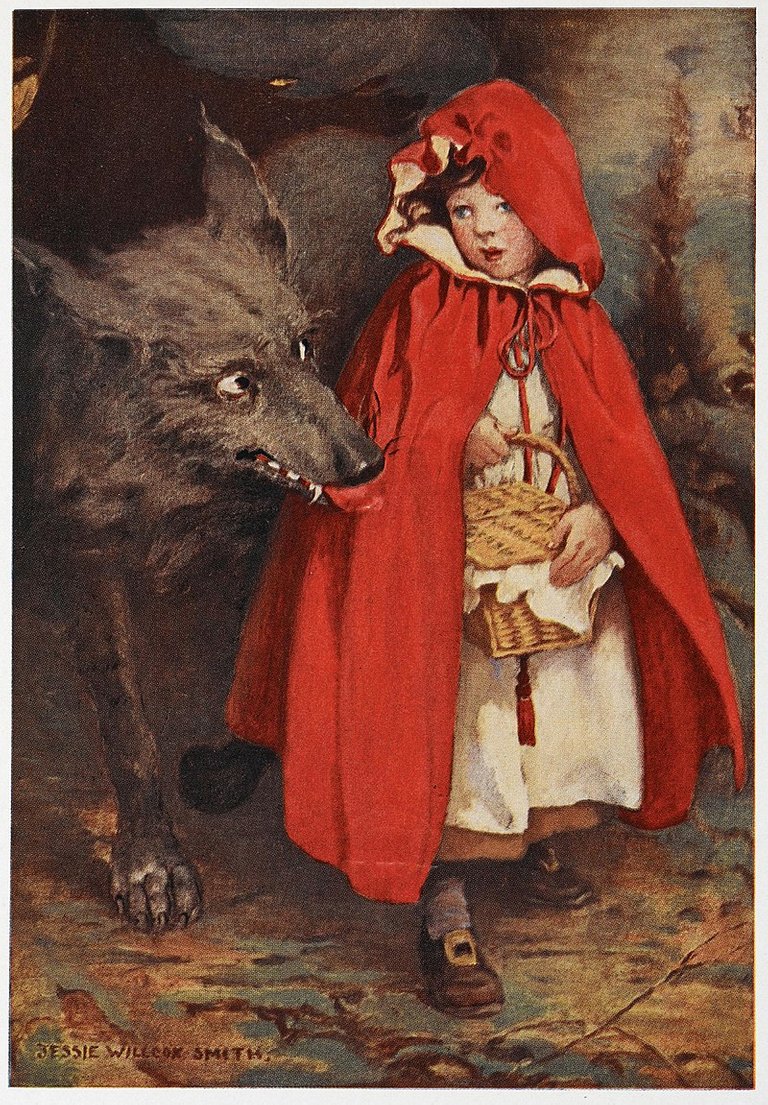 Little Red Riding Hood
Little Red Riding Hood
"Little Red Riding Hood" is a European fairy tale about a young girl and a Big Bad Wolf.[1] Its origins can be traced back to several pre-17th century European folk tales. The two best known versions were written by Charles Perrault[2] and the Brothers Grimm.
The story has been changed considerably in various retellings and subjected to numerous modern adaptations and readings. Other names for the story are: "Little Red Cap" or simply "Red Riding Hood". It is number 333 in the Aarne–Thompson classification system for folktales.[3]
Little Red Riding Hood aroused in Japanese men boundless sexual fantasies and imaginations of German beauties.😘
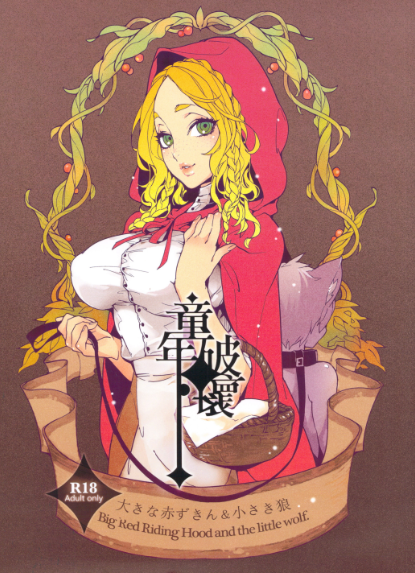
Because of adult comics created by Japanese men, East Asian men like me have become so fixed in the image of German beauties.

Perhaps my friend @v-siniarski complains about the behavior of East Asian men like me that German beauties perceive as erotic like Little Red Riding Hood?😉
What are the differences between German and French fairy tales?
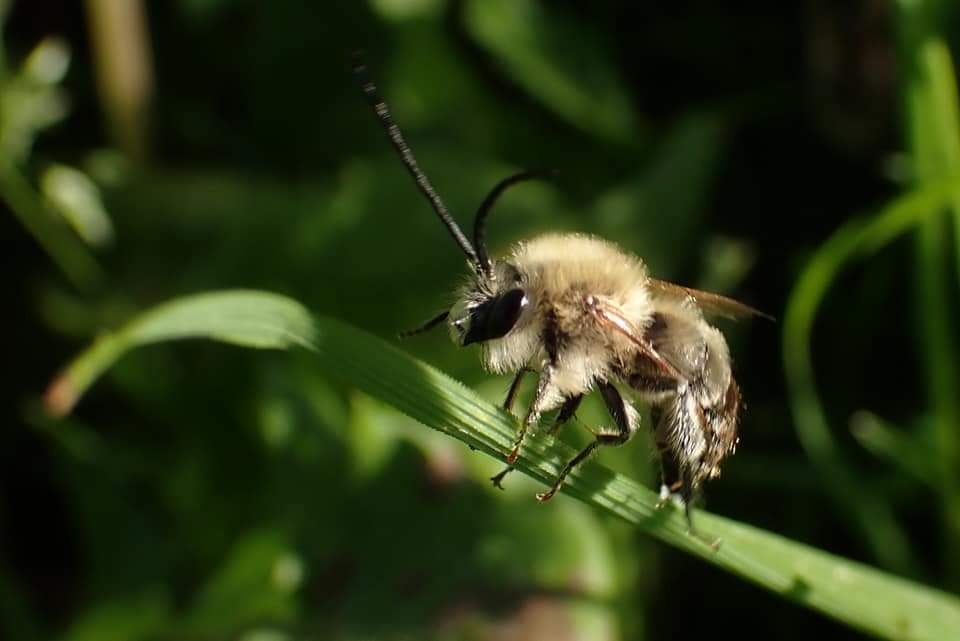 Animal-Macrophotography - The Bee
Animal-Macrophotography - The Bee
As I read @v-siniarski's article Animal-Macrophotography - The Bee, I remembered my favorite German literary work, the adventures of the bee Maya.
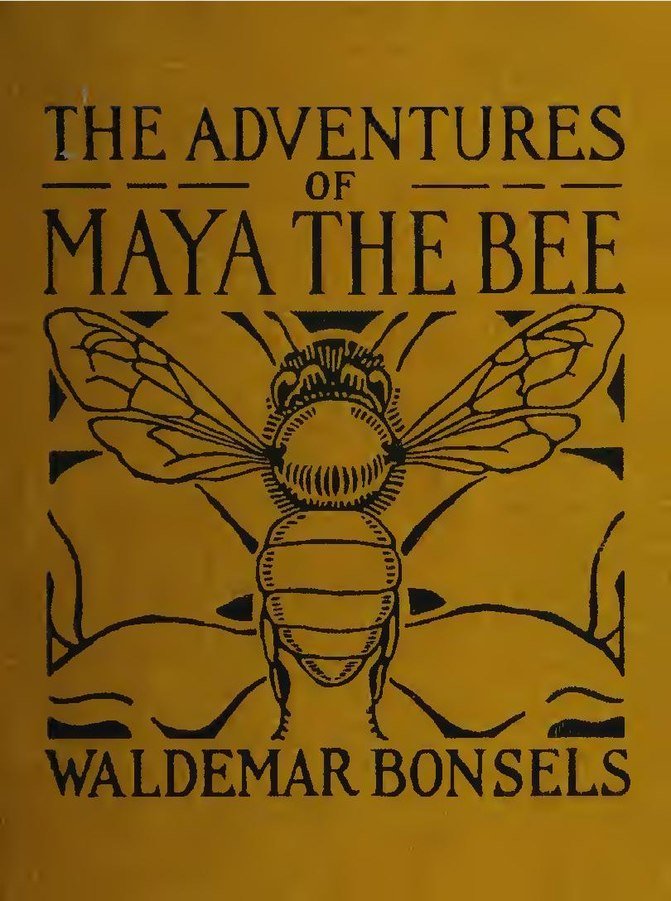 Cover des Buchs "The Adventures of Maya, The Bee" von Waldemar Bonsels (veröffentlicht 1922)
Cover des Buchs "The Adventures of Maya, The Bee" von Waldemar Bonsels (veröffentlicht 1922)
Die Biene Maja ist die Hauptfigur in zwei Anfang des 20. Jahrhunderts erschienenen Romanen des deutschen Schriftstellers Waldemar Bonsels (1880–1952) und in einer zwischen 1975 und 1980 produzierten japanisch-deutschen Zeichentrickserie sowie deren Adaption als Comicserie ab 1976. Hinzu kamen 2013 eine Neuauflage der Serie in animiertem 3D-Format sowie ein darauf basierender Kinofilm 2014. Außerdem existieren mehrere Bühnenfassungen, u. a. ein Theaterstück und ein Musical.
I don't know German, but I couldn't find any English material, so I posted the German material.😄
Perhaps the adventures of the bee Maya is one of the most famous modern German fairy tales in Japan and Korea.
Waldemar Bonsels (1880–1952) was a neo-romantic writer who advocated naturalism as opposed to German rationalism and scientism.
So, he describes the adventures of Maya, a girl bee, living alone in nature, as a reaction to the collectivism of the hive.
Germany in the 19th century was building an imperial state with Bismarck as its center. So, all Germans had to live in a society that was thoroughly organized like the military and had a strict social status system.
The Germans living in an organized society like an army were symbolically expressed on the first day of Maya's birth.
Cassandra, who raised the newborn Maya, told Maya to live a life of sacrifice for the sake of the beehive.
However, Maya escaped the hive because she longed for the outside world, where infinite freedom and adventure awaited rather than cramped and noisy hives.
These Mayan actions symbolized Waldemar Bonsels (1880–1952)'s desire to escape German society and enjoy freedom.
The insects Maya encounters during her travels are masterpieces of Waldemar Bonsels' (1880–1952) genius creativity and imagination.
The meeting and dialogue between insects and Maya, as if the various emotions, intelligence, and experiences of humans were condensed, led us into the vibrancy and emotion of the real world.
Hans Christoph, the fly that Maya first met, was eaten by the dragonfly Schnuck. Maya saw Schnuck's brutal behavior and was terrified. She set the stinger for fear that Schnuck would eat her too.
However, at the same time she felt that Schnuck was very beautiful.
Schnuck told Maya that all creatures must hunt to survive. Maya asked him about humans. He said in a sad tone that humans are cruel and scary animals. He told her the scene where humans were killing dragonflies.
I later realized that Maya and Schnuck's meeting was the alpha and omega of the work!
Schnuck was the most beautiful and heartless Maya ever met. Schnuck symbolized the beautiful and heartless nature.
Maya later met Kurt and Puck, as well as fairies and humans, but Schnuck played a major role in her fate.
Maya was caught by the wasp she didn't want to see the most and was thrown into a wasp's prison. A wasp is a bee like a bee, but it is a natural enemy that eats bees.
Maya learns from within the wasp's prison that the wasp queen planned to attack the hive and take Queen Helene VIII captive.
Maya ran into a wasp soldier while escaping from the wasp's prison. Maya was fascinated by the strong beauty of the Wasp Soldier, but struggled to escape.
The Wasp Soldier told Maya about Schnuck who had abandoned her love and left.
Maya told her that Schnuck lived by the lake.
She let Maya go, and she herself left the wasp's castle forever to meet Schnuck herself.
I was belatedly surprised to learn that Maya and the wasp soldiers were female!😲
In fact, all soldiers and worker bees, including the queen bee, were female.
The male bees all died after impregnating the queen bee.
I later discovered that the bee society was female-dominated!
Maya therefore wanted peace, freedom and love.
However, Maya ends up participating in the war between the bees and the wasps.
Maya left the honey bee society to find individual freedom and happiness in opposition to the collectivism of the honey bee society, but participated in the war to help the bee society in crisis due to the wasp invasion.
By looking at Maya, I could see the Germans who caused two world wars.
German individuals, like Maya, wanted individual freedom and happiness, but they were zealous in the war for the victory of the country.
I guess it was because Germans personally wanted freedom, peace and happiness, but they had been trained to always obey the orders of the state! 😦
I was convinced that Waldemar Bonsels (1880–1952), through Maya adventures, foretold the future of the Germans, which would cause two world wars!
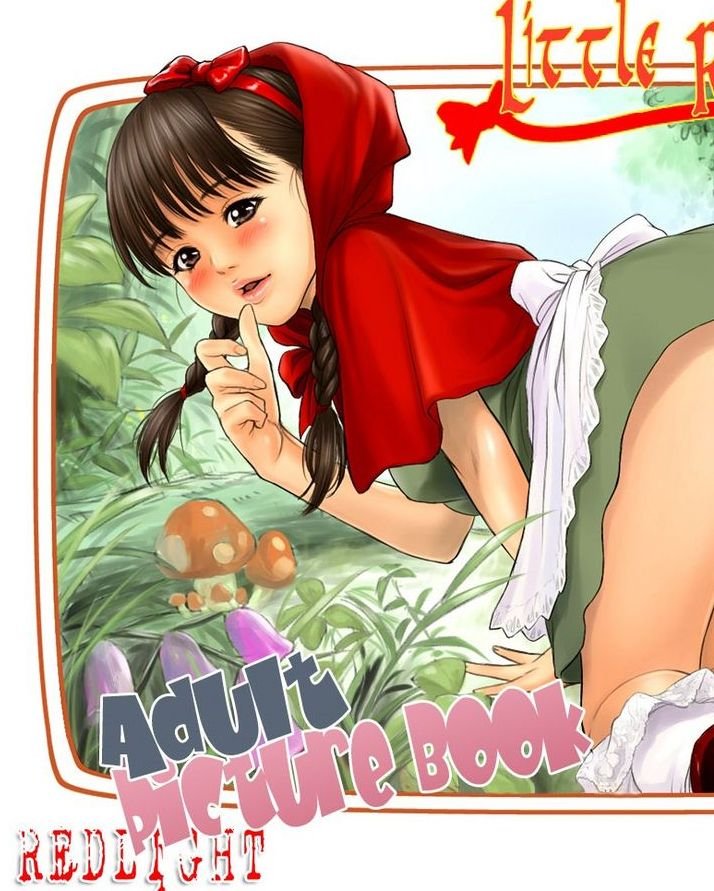

That's sailor moon and not little red riding hood lol hhhhhhh

😂😂😂😂😁
Sailor Moon's enemies are said to have been liked by American men and European men because all men turned into women.😆
Thanks for the interesting post😀😀😀👍
Dear my friend @v-siniarski , If any of my last sentences are offensive to you, please point them out.
Congratulations @goldgrifin007! You have completed the following achievement on the Hive blockchain and have been rewarded with new badge(s):
Your next target is to reach 2250 replies.
You can view your badges on your board and compare yourself to others in the Ranking
If you no longer want to receive notifications, reply to this comment with the word
STOP